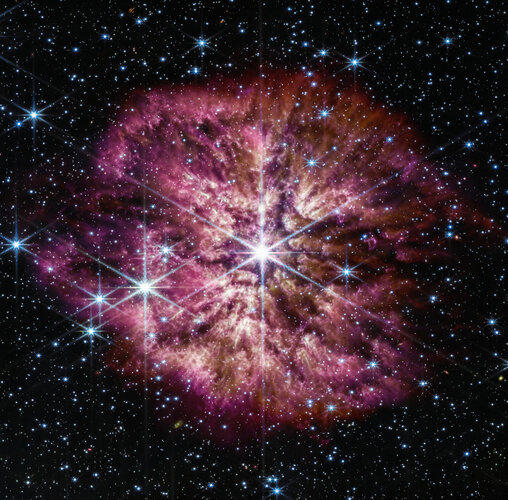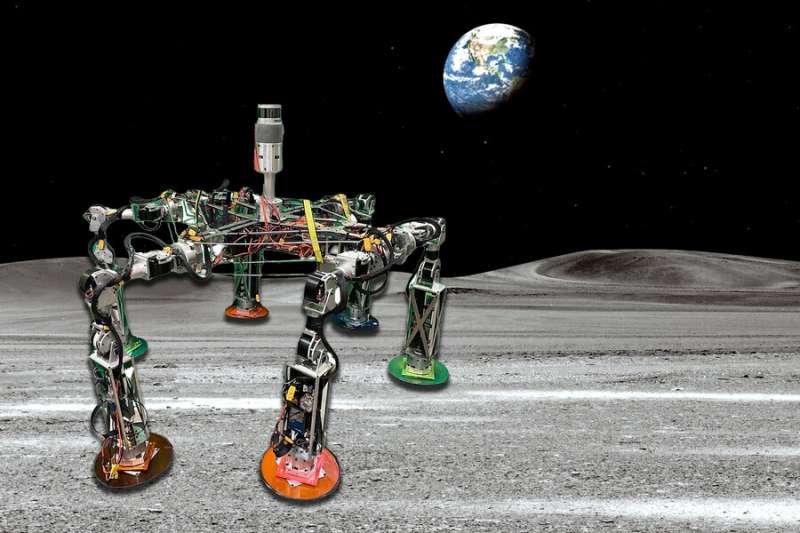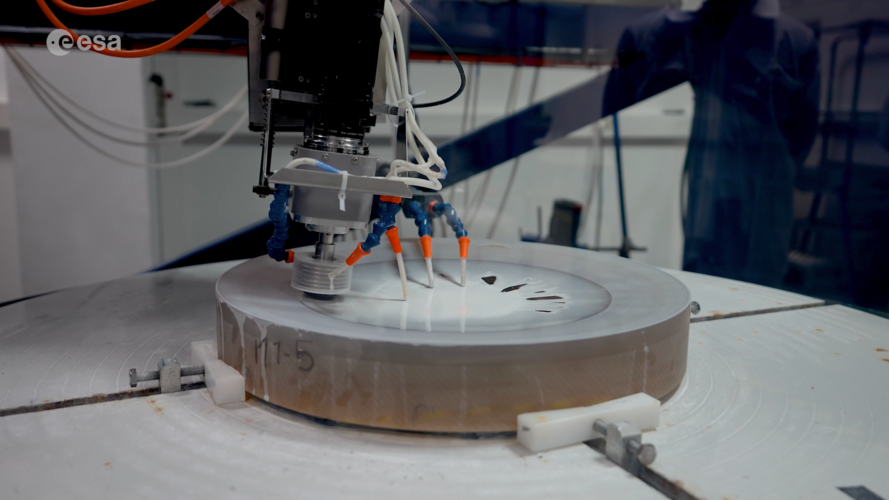
Copernical Team
Firefly awarded payload delivery contract to Lunar Orbit and Lunar Far Side
 Firefly Aerospace, Inc., an end-to-end space transportation company, was awarded a $112 million NASA contract to deliver multiple lunar payloads in 2026. As Firefly's second task order won under NASA's Commercial Lunar Payload (CLPS) initiative, the company will use its Blue Ghost spacecraft in a two-stage configuration to first place a satellite into lunar orbit and then deliver two research pa
Firefly Aerospace, Inc., an end-to-end space transportation company, was awarded a $112 million NASA contract to deliver multiple lunar payloads in 2026. As Firefly's second task order won under NASA's Commercial Lunar Payload (CLPS) initiative, the company will use its Blue Ghost spacecraft in a two-stage configuration to first place a satellite into lunar orbit and then deliver two research pa SpaceX cargo resupply mission CRS-27 scheduled for launch Tuesday
 SpaceX mission CRS-27 is planned for launch to the International Space Station Tuesday, carrying food, equipment, and materials for experiments in orbit.
The Dragon spacecraft is scheduled to launch at 8:30 p.m. EST from the Kennedy Space Center in Florida. Its launch will be livestreamed by SpaceX.
The commercial resupply mission will carry about 6,300 pounds of food to the spac
SpaceX mission CRS-27 is planned for launch to the International Space Station Tuesday, carrying food, equipment, and materials for experiments in orbit.
The Dragon spacecraft is scheduled to launch at 8:30 p.m. EST from the Kennedy Space Center in Florida. Its launch will be livestreamed by SpaceX.
The commercial resupply mission will carry about 6,300 pounds of food to the spac 'No need to worry': Odds drop newly-found asteroid will hit Earth
 The chances have plummeted that a newly-discovered asteroid with the potential to wipe out a city will hit Earth on Valentine's Day 2046, the European Space Agency said on Tuesday.
The asteroid, which is named 2023 DW and is estimated to be around the size of a 50-metre Olympic swimming pool, was first spotted by a small Chilean observatory on February 26.
It swiftly shot to the top of N
The chances have plummeted that a newly-discovered asteroid with the potential to wipe out a city will hit Earth on Valentine's Day 2046, the European Space Agency said on Tuesday.
The asteroid, which is named 2023 DW and is estimated to be around the size of a 50-metre Olympic swimming pool, was first spotted by a small Chilean observatory on February 26.
It swiftly shot to the top of N NASA James Webb Telescope returns rare Wolf-Rayet images
 NASA's James Webb Telescope captured a rare Wolf-Rayet star, one of the first times an image of that type of supernova has been seen.
The space agency Tuesday released images of the star in transition, which were captured in "unprecedented detail."
Wolf-Rayet 124 comes with "a distinctive halo of gas and dust that frames the star and glows in the infrared light detected by Webb,
NASA's James Webb Telescope captured a rare Wolf-Rayet star, one of the first times an image of that type of supernova has been seen.
The space agency Tuesday released images of the star in transition, which were captured in "unprecedented detail."
Wolf-Rayet 124 comes with "a distinctive halo of gas and dust that frames the star and glows in the infrared light detected by Webb, Arianespace inks deal to launch at least two Vega-C rockets
 Arianespace said on Tuesday that it has signed a contract to launch two Vega-C rockets, forging ahead three months after the failure of the Italian-made vehicle's first commercial flight.
The first of the two new launches will occur in the last quarter of 2025 from the Kourou space base in French Guiana, Arianespace said in a statement.
The contract includes an option for a third launch,
Arianespace said on Tuesday that it has signed a contract to launch two Vega-C rockets, forging ahead three months after the failure of the Italian-made vehicle's first commercial flight.
The first of the two new launches will occur in the last quarter of 2025 from the Kourou space base in French Guiana, Arianespace said in a statement.
The contract includes an option for a third launch, Satellite constellations multiply on profit hopes, geopolitics
 The massive constellation of satellites operated by SpaceX, while still growing, will soon be joined in low Earth orbit by many more commercial competitors, but also government-sponsored programs.
When firms floated the idea of expanding access to high-speed internet through satellite constellations in low Earth orbit (LEO), analysts expected only two or three companies would succeed.
"B
The massive constellation of satellites operated by SpaceX, while still growing, will soon be joined in low Earth orbit by many more commercial competitors, but also government-sponsored programs.
When firms floated the idea of expanding access to high-speed internet through satellite constellations in low Earth orbit (LEO), analysts expected only two or three companies would succeed.
"B SpaceX launches Cargo Dragon carrying supplies and experiments to ISS
 SpaceX launched its 27th Commercial Resupply Service (CRS-27) mission for a 35-hour journey to the International Space Station (ISS) for NASA on Tuesday, March 14 at 8:30 p.m. EDT (0030 GMT Wednesday) from Launch Complex-39A (LC-39A) at the Kennedy Space Center, Florida.
The uncrewed Dragon capsule atop a Falcon 9 rocket is packed with more than 6,000 pounds of fresh food, hardware, and ex
SpaceX launched its 27th Commercial Resupply Service (CRS-27) mission for a 35-hour journey to the International Space Station (ISS) for NASA on Tuesday, March 14 at 8:30 p.m. EDT (0030 GMT Wednesday) from Launch Complex-39A (LC-39A) at the Kennedy Space Center, Florida.
The uncrewed Dragon capsule atop a Falcon 9 rocket is packed with more than 6,000 pounds of fresh food, hardware, and ex Webb captures rarely seen prelude to a supernova

A Wolf-Rayet star is a rare prelude to the famous final act of a massive star: the supernova. As one of its first observations in 2022, the NASA/ESA/CSA James Webb Space Telescope captured the Wolf-Rayet star WR 124 in unprecedented detail.
Mix-and-match kit could enable astronauts to build a menagerie of lunar exploration bots

When astronauts begin to build a permanent base on the moon, as NASA plans to do in the coming years, they'll need help. Robots could potentially do the heavy lifting by laying cables, deploying solar panels, erecting communications towers, and building habitats. But if each robot is designed for a specific action or task, a moon base could become overrun by a zoo of machines, each with its own unique parts and protocols.
Carbon dioxide monitoring mission in development
 Video:
00:04:58
Video:
00:04:58
The pressure is on to reduce the amount of greenhouse gases we pump into the atmosphere – but the race is also on to support the monitoring that shows if targets are being met. Being developed by ESA on behalf of the EU, the new Copernicus Anthropogenic Carbon Dioxide Monitoring mission, or CO2M for short, is destined to be Europe’s prime mission for monitoring and tracking carbon dioxide emissions from human activity. CO2M is currently planned as a two-satellite mission, each of which will carry a near-infrared and shortwave-infrared spectrometer to measure atmospheric carbon dioxide at high
